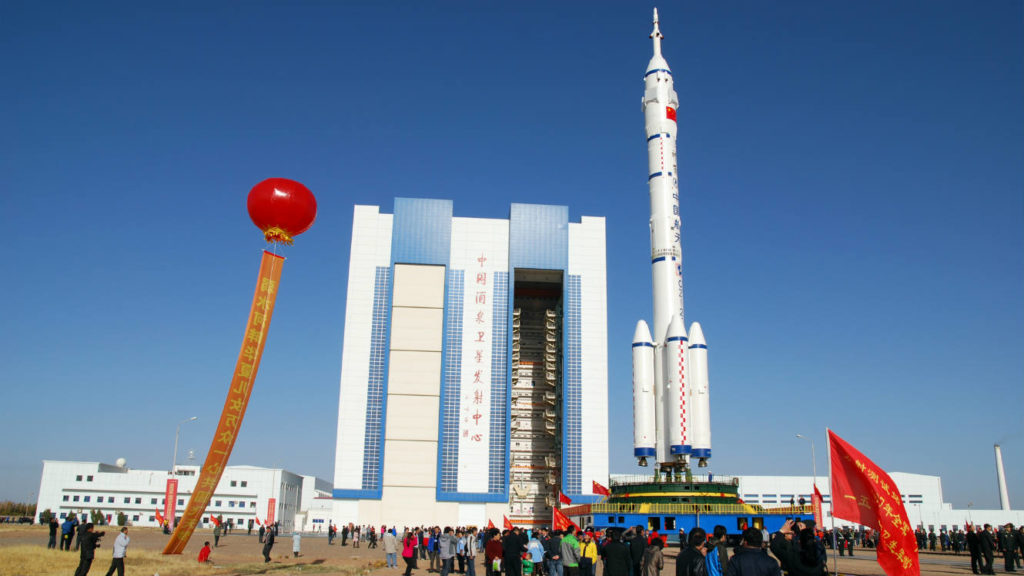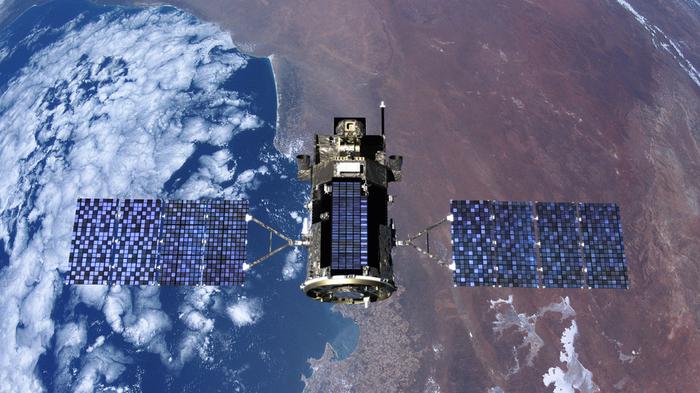
(War on the Rocks)
On December 27, 2016, China’s State Council Information Office published a white paper outlining the plans for a new and expanded national space program which aims to become the first country to soft land a probe on the far side of the moon. The white paper states that Change-4 spacecraft will, through the new lunar exploration project, better examine the evolution of the moon and will carry out a low-frequency radio astronomy observation around the landing site.
It also restated China’s ambitions to send a mission to Mars by 2020. According to the white paper, in the next five years, China will continue to enhance the basic capacities of its space industry, and strengthen research into key and cutting-edge technologies.
Since sending its first satellite into orbit in 1970, almost two decades after Soviet Union’s Sputnik 1, China has been consistently funding its space program, with ambitions to both compete in the U.S. dominated global satellite networks and also to boost its military modernization.
China’s recent increased focus on enhancing its military and space capabilities are not without basis. The space environment is more competitive than ever as states are striving to benefit from space-enabled technologies and move their defense capabilities above the earth to gain a clear-eyed look at the conflict-ridden world.
Even though the militarization of space started during the Cold War years, technological developments and (unclassified) tests proved that we are now closer to an actual warfare in space. Over the past few years, China and Russia have been gradually strengthening their space-provided weapon capabilities, specifically focusing on anti-satellite defense strategies and technology.

(War on the Rocks)
For example, Russia recently launched an anti-satellite weapon into the space, the latest in a number of weapons led under Putin’s administration. The test of the PL-19 Nudol missile was carried out on December 16 from a base in central Russia, and was monitored by U.S. intelligence agencies. It was the fifth test of the Nudol missile and the third successful flight of a system Moscow has claimed is for use against enemy missiles, said officials familiar with the reports of the launch.
With modern armies and much of the world’s economy dependent on the information, imagery and communication systems supported by satellites in orbit, it is no surprise that providing assets in space is a high priority for national security and provides a competitive edge in deterrence as part of defense strategies globally.
As a global force, Washington has many reasons to further explore technology options in space for military capabilities as well. Instead of exhaustive deployments, the space domain successfully facilitates the U.S. to overcome the financial and political borders, allowing for greater force projection. As a result, the U.S. military depends critically on its orbital assets for navigation, intelligence exercises, accuracy, communication, early warning and other activities.
While being the leader in space and military technologies provides advantages for the U.S., its heavy reliance on these technologies also entails dangers. The existing U.S. power in space could give challengers incentives to attack its infrastructure in orbit or develop technologies to obscure satellite vision, essential for military communications and location accuracy.
In the infamous 2007 incident, China tested and demolished one of its own satellites, resulting the largest recorded creation of space debris with more than 2,000 pieces. Irrespective of labeling it as a scientific exploration accident, this is a close example of what could become an anti-satellite weapon threatening to destroy U.S. investments in space.

(Vice News)
While historic rivals—even though how we label Russia and China may soon change—also depend on space for their military capabilities, they are less dependent on these assets since neither state has as much investments as the U.S. do on orbit and since their power is initially aimed within their geographic regions, they can successfully rely on earth-based technologies and traditional military capabilities for their short to medium term goals. In the long term, however, it would benefit any opposition to U.S. significantly if they could simply take down its satellites, essentially eyes and ears of the U.S. national defense.
“China’s aspirations are driven by its assessment that space power enables the country’s military modernization and would allow it to challenge U.S. information superiority during a conflict,” states the 2015 Report to Congress of the China-U.S. Economic and Security Review Commission and besides the national security concerns and military aptitudes, it underlines that the humanity depends on space systems for communication, exploration, navigation and a host of other functions essential to modern life.
If the U.S. wants to preserve its superiority, not dominance, in the face of increasing threats to its strength in space, it will need to invest in strategies to deter attacks on its orbital assets. And while working on deterrence strategies, it will also need to take additional steps to plan for a potential war in space, by providing the necessary financial and political support to defense forces and also administrating space programs with both deterrence and readiness in mind, all while keeping a close eye on what others are conducting in orbit.
A good place to start could be improving the space situational awareness programs and investing in technologies which makes managing and operating space systems more resilient. According to a Government Accountability Office report, situational awareness in space remains limited despite halting attempts at improvement. This means more land-based radar and optical telescopes, as well as space-based visible optical telescopes to track the 22,000 currently active and dead satellites, junk, and debris.
If the U.S. took no action at all, China and Russia would no doubt continue to grow their space-provided capabilities and could eventually undermine the American strategic advantage in space. Others would surely follow to catch up and take their place in the renewed space-front.
Striving to maintain American superiority in space does not just protect the U.S., but considering the alternatives, also makes the world a safer place.